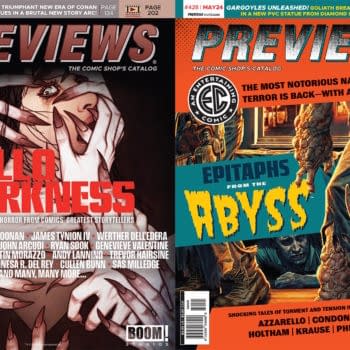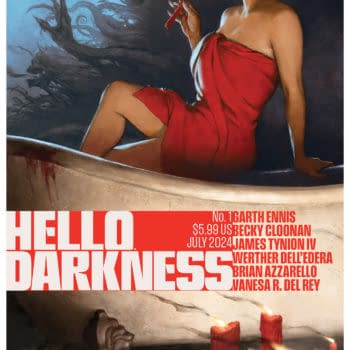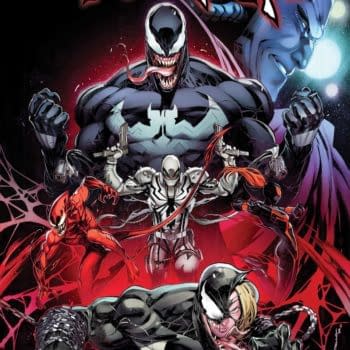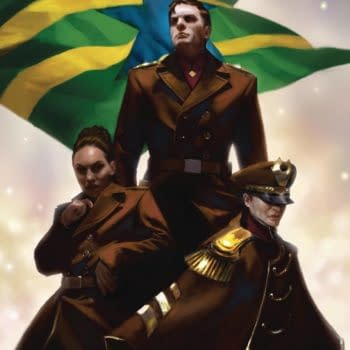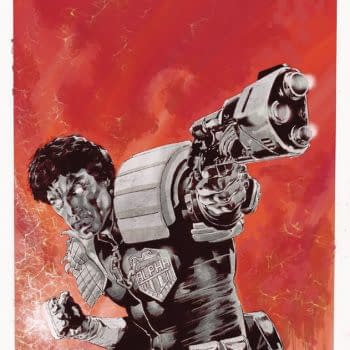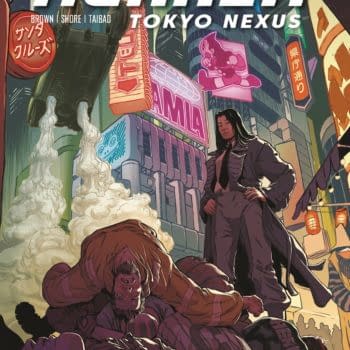Posted in: Comics | Tagged:
Comics, DIY and the LA Effect
David Blake Lucarelli writes;
Last night in the Nerdmelt Showroom at Meltdown Comics The Crawford Family Forum presented a forum entitled "Comics, DIY, and the LA effect," about the challenges and opportunities that confront would be fledgling comics creators living in the city of Angels. 89.3 KPCC recorded the audio, and pending evaluation of the audio quality, the entire symposium may be posted on their website.
Mike Roe, KPCC's pop culture blogger for "Without A Net hosted the evening interviewing local creators writer Sam Humphries (Our Love is Real, Sacrifice, The Ultimates, Uncanny X-Force), cartoonist/writer Hope Larson (Salamander Dream, A Wrinkle in Time, and the forthcoming Who Is AC), and Jim Higgins former DC comics editor, Meltdown University's founding director/principal instructor, a CalArts and Otis College of Art and Design instructor, and editor/publisher of New Thing (an international short comic stories anthology).
Sam Humphries detailed about how his first two self-published projects (Our Love is Real, and Sacrifice) were motivated in part by a sense of fear and desperation when he was laid off from his job working for a manga publisher. He felt that if he didn't produce comics then, it might never happen. The general consensus was that unlike in the book publishing industry, where self-publishing is looked down upon , the proud tradition of high quality works by creators like Brian Michael Bendis and Dave Sim , has paved the way for self-publishing to be afforded more respect by the majors. Or, as Sam Humphries put it, survival of the "trial by fire," that is self-publishing affords a comics creator a badge of honor as a "Jesuit ninja badass."
All the panelists also agreed that the main thing for the fledgling comics creator is to not let perfectionism, or fear of rejection get in the way of creating your first comic. And to start small. That is, save your 2000 page epic sci-fi extravaganza for after you've done first 6 to 8 page short.
As for how living in Los Angeles effects the lives of would be comics creators, Hope Larson lamented the high cost of living, but also praised the deep well of creative people and the creative energy that permeates the city. Because Los Angeles is filled with artists pursuing their own DIY music, movies, and other projects, Sam Humphries found Los Angeles to be a much more supportive community than his hometown Minneapolis would have been.
Jim Higgins pointed out that while Los Angeles may not have the sheer number of indie comics creators in cities like New York and Portland, the recent success of LA Zine Fest seemed to indicate their numbers are growing. Hope Larson postulated this is due in part to local animation companies drawing indie talent out to the West Coast for TV and webisode projects.
Whereas creators in New York have the advantage of the close proximity of the publishing industry and the major comics companies, the proximity of the TV and film industry in Los Angeles has given rise to comics produced largely as pitches for those industries. While both Larson and Humphries were highly critical of this phenomena, with Humphries humorously referring to such creators as "carpetbaggers," Higgins countered that there may be the occasional project produced with this motive in mind that is a worthwhile comic book in and of itself. For those creators who do find their projects being optioned by Hollywood Humphries cautioned that oftentimes the often times greater amount of money involved can be counterbalanced by the much slower pace, greater pressures and loss of artistic control.
As for the phenomenon of creators like Humphries and others jumping back and forth between creator owned indie work and work for the "big two," this was likened to actors who alternate between doing smaller indie films and summer blockbusters.
Both Larson and Humphries sang the praises of having a good editor, when it comes to pushing the writer to do his best work. Humphries even went so far as to hire an editor on his own indie book Sacrifice, and said it was well worth it. Higgins agreed that the best editors usually work with the "Socratic Method" of framing their contributions to the process in the form of questions, such as "What are you trying to do with this scene?" instead of offering plot points to the story.
Sam Humphries championed social media and sending out PDF copies of your project as good promotional tools, but cautioned that larger comics sites like comic book resources would be more likely to help you promote your work if it was dished out in smaller easier to digest "bite-sized chunks."
Both Humphries and Larson expressed skepticism that Kickstarter was all that useful to new creators, as a built in fan base is often required to reach funding goals, but Jim Higgins countered with the real life success example of his student writer/artist Felix Kiner (felixkiner.com) and his project Polaris which as of this writing has already met and more than doubled its admittedly relatively modest goal of 350 dollars for printing costs, to 774 dollars and counting for his "comedy about forbidden love, presidential elections, foreign sci-fi movies, and family dysfunction." I spoke with Felix after the show and he promised to post a blog including tips about how he made that happen.
As for what the future holds Jim Higgins foresees a continued expansion of female creators, coming into fold often times through the gateway of manga and anime, and noted that while the major companies have picked up female authors from the publishing industry, they could do more to reach out to female indie comics creators.
Humphries astutely pointed out, that digital comics and physical comics seem to be able to "peacefully co-exist" in a mutually beneficial relationship, largely because unlike the music and publishing industry, the price point of digital comics has been kept largely the same.
Hope Larson said that with the advent of web comics, the gatekeepers to the industry have been removed, and new creators should revel in the freedom to do their first project about what they are most passionate about, because it is the only time they will have that freedom to do so without having to worry on some level about the expectations of their audience.
Last night we got to hear from two very talented creators who did just that, and a man whose teaching is helping to bring the next generation of creators to fruition. The LA effect, was in full effect, indeed.
David Blake Lucarelli is the writer/creator of the Children's Vampire Hunting Brigade, a four issue mini-series inspired by the real life incident of the Gorbals vampire and described by film director Joe Doughrity as "Buffy meets S.E.Hinton's The Outsiders." You can read the first 11 pages online at cvhb.net Kicktstarter campaign to launch imminently.







